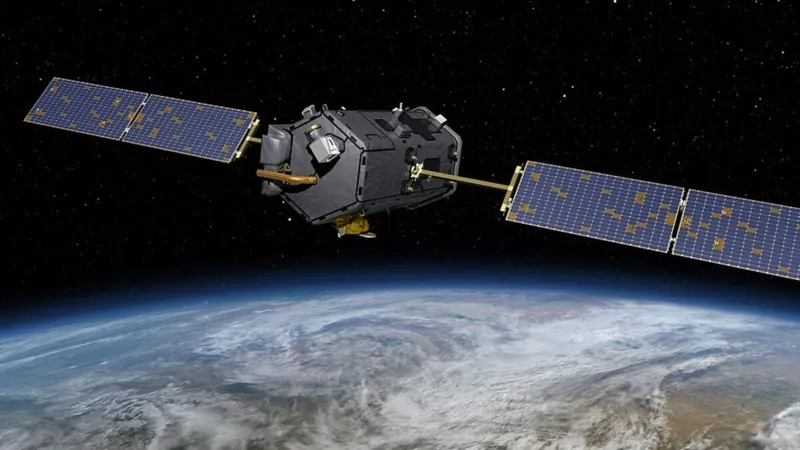
Revealed: The Shocking Truth Behind Satellite Electrical Surges!
2025-09-02
Author: Ying
Unraveling the Mystery of Satellite Failures
In 1994, the unexpected failure of two Canadian TV satellites rocked the aerospace world. Anik E1 and E2, both orbiting Earth, succumbed to a catastrophic solar storm that unleashed intense electrostatic discharges, crippling their essential control systems. But what caused this bizarre phenomenon, and how can we prevent it?
A Breakthrough Discovery
Recent groundbreaking research from the Los Alamos National Laboratory has shed light on the enigmatic relationship between electrical surges on spacecraft and bursts of electron activity in space. A meticulous study involving sensors on the U.S. Department of Defense’s Space Test Program Satellite 6 (STP-Sat6) revealed a staggering 272 electrical discharge events correlated with peaks in electron flux over more than a year.
What’s at Stake?
The space surrounding Earth is a chaotic mix of charged particles, primarily from the Sun’s solar wind and explosive solar flares, all colliding with orbiting satellites. These relentless bombardments can not only tarnish satellite performance but also cause calamitous failures. The phenomenon, known as spacecraft environment discharge, occurs when imbalances in electrical charge create dangerous sparks and electromagnetic interference, leading to temporary hiccups or irreparable damage.
Connecting the Dots: Electrons and Discharges
For the first time, this new research has established a clear link: the more electrons there are around a spacecraft, the greater the likelihood of electrical discharges. By utilizing advanced sensors that measured both radio frequency activity of the electrical charges and electron levels, researchers could predict charge buildup leading to discharges.
An Early Warning System?
With this newfound understanding, the potential for developing predictive systems could revolutionize satellite operation. Imagine being able to forecast electromagnetic storms before they wreak havoc on essential spacecraft—this is the dream now within reach thanks to these remarkable findings.
Stay Tuned!
As scientists continue to unravel the complexities of our charged space environment, the future of satellite technology looks brighter than ever. Better forecasting means more reliable satellites and a richer connection to our world!



 Brasil (PT)
Brasil (PT)
 Canada (EN)
Canada (EN)
 Chile (ES)
Chile (ES)
 Česko (CS)
Česko (CS)
 대한민국 (KO)
대한민국 (KO)
 España (ES)
España (ES)
 France (FR)
France (FR)
 Hong Kong (EN)
Hong Kong (EN)
 Italia (IT)
Italia (IT)
 日本 (JA)
日本 (JA)
 Magyarország (HU)
Magyarország (HU)
 Norge (NO)
Norge (NO)
 Polska (PL)
Polska (PL)
 Schweiz (DE)
Schweiz (DE)
 Singapore (EN)
Singapore (EN)
 Sverige (SV)
Sverige (SV)
 Suomi (FI)
Suomi (FI)
 Türkiye (TR)
Türkiye (TR)
 الإمارات العربية المتحدة (AR)
الإمارات العربية المتحدة (AR)